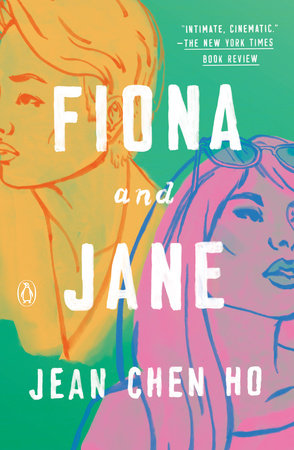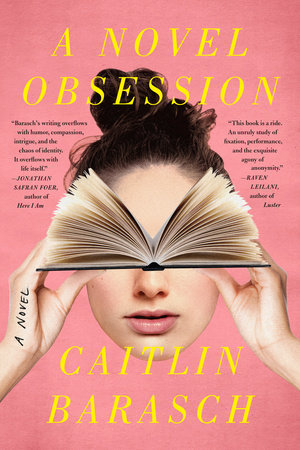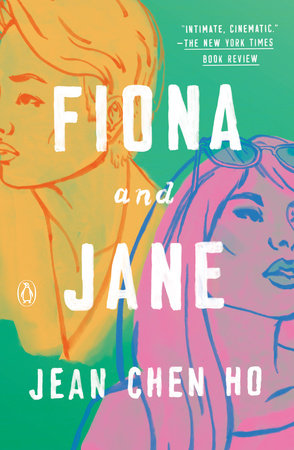

Fiona and Jane
By Jean Chen Ho
By Jean Chen Ho
By Jean Chen Ho
By Jean Chen Ho
By Jean Chen Ho
Read by Natalie Naudus
By Jean Chen Ho
Read by Natalie Naudus
Category: Short Stories | Literary Fiction
Category: Short Stories | Literary Fiction
Category: Short Stories | Literary Fiction | Audiobooks

-
$17.00
Jan 03, 2023 | ISBN 9780593296066
-
Jan 04, 2022 | ISBN 9780593296059
-
Jan 04, 2022 | ISBN 9780593452165
438 Minutes
Buy the Audiobook Download:
YOU MAY ALSO LIKE
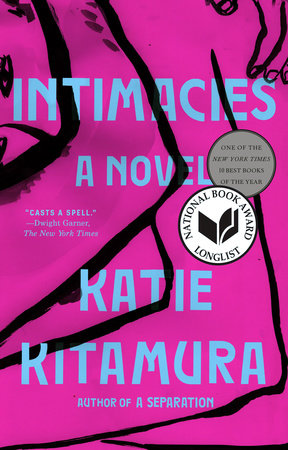
Intimacies

Disorientation
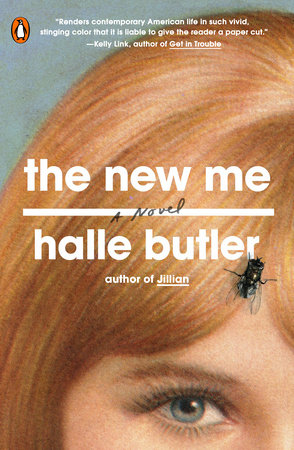
The New Me
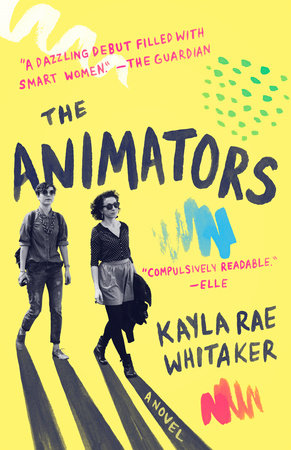
The Animators
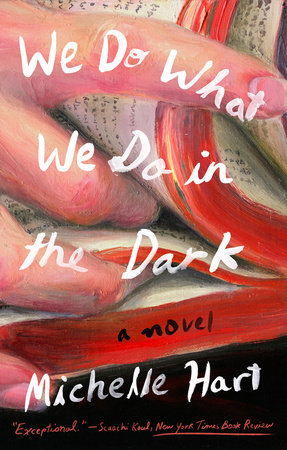
We Do What We Do in the Dark
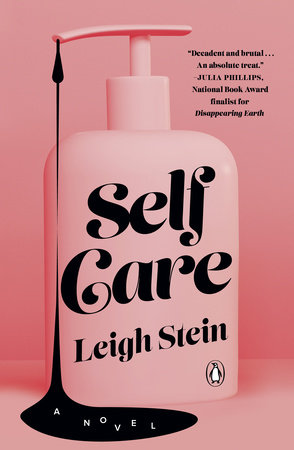
Self Care
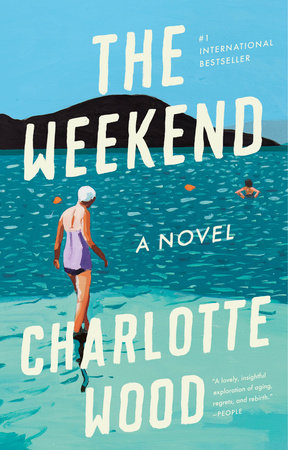
The Weekend
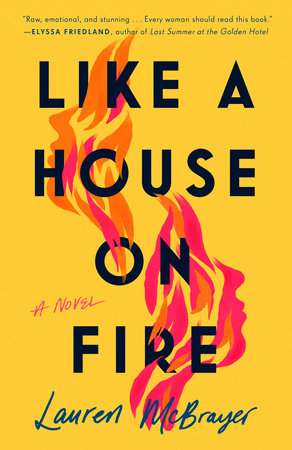
Like a House on Fire
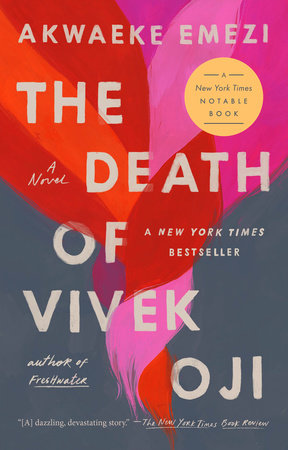
The Death of Vivek Oji
Praise
LONGLISTED FOR THE STORY PRIZE
A BELLETRIST BOOK CLUB PICK
“Ho’s debut work is the perfect modern example of great American fiction. It’s a brilliant series of stories about the lives of two Taiwanese American women and their friendship over 20 years as they explore identity, sexuality, heartbreak and family secrets…What a great read! I feel like Fiona and Jane are friends of mine. I cannot wait to see what Ho writes next. Fiona and Jane brings you into the lives of these women in a relatable, authentic way. You will love it.”
—Jake Tapper
“Over the course of the book Fiona and Jane become real and electric and precious people. The stories move through intimate, cinematic scenes. . . . The world Ho creates between the two women feels like one friend reading the other’s story, wishing she were there. . . . [E]ven to those not from Los Angeles, Ho’s debut collection feels like a shared experience.”
—Tammy Tarng, The New York Times Book Review
“Fiona And Jane captures the textures of female friendship and all the intensity, loyalty, and occasional torment of it.”
—Ailsa Chang, NPR’s “All Things Considered”
“An engaging first book. . . . Secrets and betrayals resound through many of the stories. . . . There’s also an endearing sexual boldness in Fiona and Jane. These are Western women who grew up in the Nineties. . . . It’s a vibrant, sexually active world these friendships are acted out in. . . . Emotional accuracy lights up the work. . . . Ho’s writing evokes youthful folly, ever glorious and stupid, with a shadow of later awareness in the prose.”
—Joan Silber, The New York Review of Books
“Jean Chen Ho’s debut collection . . . evokes a distinctive multi-ethnic Asian American experience coming of age in Los Angeles in the late 20th century: R&B mixtapes, Cool Water cologne, red faces drunk on soju. . . . Through shifting perspectives and evocative milieus (from night markets to seedy Korean bars and exclusive clubs), the assemblage comes as close to a primer on modern L.A. Asian American rites of passage as anything in recent memory.”
—Lisa Wong Macabasco, Vogue
“Ho’s strong debut follows two Taiwanese American besties from grade school through their 30s, flipping through decades to highlight key relationships, crises, nights of drinking and sex. Other people, the world and the girls themselves change, but the friendship between beautiful Fiona and sturdy Jane endures.”
—People
“This sparkling debut collection navigates the intimate contours of female friendship. . . . Ho’s granularity and lush detail—the flavor of taquitos, having tender sex with a lover for the last time—are in part why the stories are irresistible. But it’s Ho’s wisdom and compassion for her characters that make us yearn to stay in her world after we’ve reached the last page.”
—Oprah Daily, ”Great Reads You Don’t Want to Miss”
“Fiona and Jane is a refreshingly honest treatment of long-term friendships — particularly their inexorable ebb and flow. Story by story, the book captures the way friendships negotiate their own boundaries, at times dissolving unexpectedly and at others flourishing into something more, even if just fleetingly.”
—Meena Venkataramanan, The Los Angeles Times
“A confidently nonlinear debut collection that sluices through the interiority of its protagonists without diminishing the passion and powerfully mysterious intimacy of female friendship.”
—Vulture, “The Best Books of the Year (So Far)”
“Intricately rendered. . . . Fiona and Jane celebrates a woman’s ability to be late, to show up in their own lives when and where they want to, to change their minds, to be lonely and to be in love, and to be respected regardless.”
—Rosa Boshier, The Washington Post
“Ho renders both women so real that they begin to feel like people you’ve encountered and hung out with. . . . Its precisely the fact that the women’s trials and tribulations feel refreshingly life-sized that makes the book ring so beautifully, sometimes terribly, true.”
—Ilana Masad, NPR.org
“In a story told in alternating voices, two Taiwanese American women, Fiona Lin and Jane Shen, navigate identity, sexuality and heartbreak over two decades in this intimate exploration of female friendship.”
—USA Today
“[Fiona and Jane] explores the murky layers of female friendship and the meaning of home.”
—Entertainment Weekly
“The complex depth of female friendship provides endless fodder for Jean Chen Ho in her debut, Fiona and Jane. Centering on nearly two decades of best friendship between the two titular Taiwanese American women, the [book] reads like a love letter to the beauty and intensity of their relationship. Bonded by their shared experience of coming of age in Los Angeles in immigrant families, Fiona and Jane’s friendship is challenged over the years by distance, romantic relationships and betrayal. But throughout it all, they are constants in each other’s lives—reminders for one another of who they once were and all that they can be.”
—Time
“This frank and moving debut by Jean Chen Ho, told in short stories from differing eras and perspectives, follows a pair of Taiwanese American best friends as they navigate grief, ambition, and the changing realities of their friendship.”
—Marie Claire
“In Ho’s debut book of fiction, two childhood best friends growing up in Los Angeles fall in and out of love, navigate estranged family members, and deal with casual racism in these linked short stories about friendship over time.”
—Tomi Obaro, Buzzfeed
“Fiona and Jane are best friends, navigating their tumultuous teenage years together, as well as their family histories and all that comes with them. But when Fiona moves across the country, their bond weakens and threatens to break. This [book] about the power of female friendship will give you a gorgeous peek into both women’s perspectives on a shared story that has as many facets as they do.”
—Good Housekeeping
“Spanning the globe and 20 years of friendship, two Taiwanese-American women grow up, grow apart and grow together in love, secrets, grief and heartbreak.”
—Parade
“A beautiful, sometimes heartbreaking story about the lives of two Asian American girls and how they navigate everything from same-sex relationships to parent loss and beyond.”
–Zibby Owens, Katie Couric Media
“Have you had one of those friendships that served you for many, many years but now exists only in the past tense? Fiona and Jane, Taiwanese girls living in Los Angeles, were best friends all throughout childhood, high school, and college. Then [Fiona] moves away, and like so many long friendships, theirs evaporates. Ten years later we meet them just in that tender, terrifying moment of reconnecting.”
—Glamour
“Multi-decade friendship books are hard to pull off and Jean Chen Ho’s debut collection Fiona and Jane is a splendid addition to the genre. Expansive and intimate, it traces the titular characters’ coming of age across Taiwan, Southern California, and New York City. Even in the expansive scope of these singular stories, she draws our attention to unseen intimacies both tender and cruel between friends, family, and lovers.”
—Benedict Nguyễn, BOMB
“Virtuosic. . . . A tender portrait of female friendship in all its complexity and depth. . . . Ho’s writing is so vivid, witty and warm that after finishing Fiona and Jane, readers will miss these characters like their own best friends.”
—Mike Alberti, The Star Tribune
“Intimate and irreverent. . . . Ho’s stories tackle themes of identity, shame, grief, sexuality and the intensity and complexity of female friendship.”
—Victoria Namkung, NBC Asian American
“A fierce debut. . . . We follow Fiona Lin and Jane Shen across time zones and through a whirlwind of settings: a night market in Taipei, a hospital room in New York City, a greasy Korean bar in Garden Grove. Against a backdrop of familial tension and messy romances, Fiona and Jane navigate their burgeoning sexualities, grapple with inherited traumas, and struggle with the aftermath of impulsive decisions. . . . The stories are also saturated with queerness. . . . At the same time, Fiona and Jane doesn’t shy away from the brutal complexities of queer life.”
—Ariel Chu, them.
“A wonderful debut. . . . [Fiona and Jane] is a book that is built on memory, a book that speaks to the importance and difficulties and richness of friendship between women over time, a book that braids its form and content together to create meaning.”
—Laura Spence-Ash, Ploughshares
“A tender portrait of female friendship. It’s about two Taiwanese American women, Fiona and Jane – longtime best friends whose relationship is strained when life scatters them to opposite coasts. The story spans decades as they grow together and apart, navigating love, death, complicated families and heartbreak.”
—The Washington Post
“Two young Taiwanese women navigate friendship and sexuality in this 20-year narrative. Living in New York and Los Angeles, Fiona and Jane tell alternating stories about what it’s like to be Asian in America, the bonds of friendship as girls become women and what loyalty truly means.”
―Zibby Owens, Good Morning America online
“Refreshing and intimate, this debut collection of stories features the underrepresented voices of Taiwanese American best friends, Fiona and Jane, and the evolution of their lives and relationship over 20 years.”
—Ms. Magazine
“Spanning nearly thirty years, Jean Chen Ho’s linked story cycle centers on the ever-evolving relationship between two best friends as they weather the hard-partying highs and the lonesome lows of youth, the comforts and frustrations of filial duty, and the often-baffling search for some semblance of stability.”
—Electric Literature, “The Most Anticipated LGBTQ+ Books of 2022”
“Fiona and Jane so precisely captures a lot that’s left unsaid in strong female friendships: small resentments that build over time, even outright betrayal. It’s a three-dimensional portrayal of their bond—the good and the bad. There is love here, and refreshing honesty, too. If you are lucky, you have had a friend like this in your life, a friend who you might want to share this book with.”
—Katie Yee, Lit Hub’s “Most Anticipated Books of 2022”
“A tender, coming-of-age tale that will have you calling up your best friend. . . . An intimate portrait of female friendship — the drama, the strength, the love — while also diving into themes of sexuality, mental health, immigration, secrets, and cultural identity.”
—Jordan Snowden, Apartment Therapy
“This [book] captures the ever-so complicated intensity of those female friendships that feel more like soulmates — from teens running though seedy L.A. bars through adult life in California and New York, Fiona and Jen are two women who deal with a lot of s*** that comes with life: opportunistic partners, parent’s sudden death, etc. Their friendship is strained by it all but they always have a home in each other (*sobbing*) in this intimate, raw portrait of friendship.”
—Nylon
“Judging by the cover alone, you can tell Fiona and Jane is probably going to be one of the hot girl subway books in 2022.”
—W Magazine
“Jean Chen Ho’s Fiona and Jane follows the eponymous Taiwanese American duo over the course of 20 years. After growing up together in California, the two best friends are separated when Fiona lights out for New York — a move that leaves Jane to deal with her father’s untimely death without her BFF by her side.”
—Bustle
“While an intimate portrait of friendship, Fiona and Jane also tackles themes around sexuality, social class, immigration, family secrets, mental health, and Asian American identity.”
—Fortune
“Chen Ho is a masterful storyteller . . . . In a world that is increasingly defined by social media connections, the waxing and waning of Fiona and Jane’s bond reaffirms that close, in-person friendships still have a chance.”
—Susan Blumberg-Kason, Asian Review of Books
“Fiona and Jane by Jean Chen Ho chronicles the friendship of two Taiwanese-American women who have been inseparable since second grade. . . . [An] astounding [book] about adult friendships and two remarkable women who aren’t quite sure if they still fit together like they did when they were children.”
—PopSugar
“Compelling. . . . Fiona and Jane—both earnest, curious and heart-full—epitomize the realities of growing up in America as young women, as immigrants, as Asian Americans. Their arcs show how families complicate one’s life while also enriching it, how friends can become a found family, and how every choice can echo in and reflect a person’s whole life. By the [book’s] end, readers will feel as though they carry some part of these women with them, as if Fiona and Jane are our friends, as if their stories might yet overlap with our own.”
—BookPage (starred review)
“I have long maintained that there aren’t nearly enough books centered on the intricate, fascinating complexities of close female friendship, and I’m so glad to learn that Ho’s novel Fiona and Jane follows a deep friendship between two Taiwanese American women. I must read this book. Publishers, please give us more books about friendship.”
—R.O. Kwon, Electric Literature, “61 Books by Women of Color to Read in 2022”
“These linked stories lovingly and unflinchingly explore the complications of familial relationships, shifting notions of home, and how friendship can be both a wound and a balm.”
—Tiffany Babb, The Observer
“Brutally honest, tender, funny, and . . . with characters that will stay with you long after reading.”
—Erica Ezeidedi, Book Riot
“With Fiona and Jane, Jean Ho announces herself as a bold and provocative new talent to watch out for. In this sexy and stylish set of stories about friendship, love, loyalty, and betrayal, she fearlessly delves into the intimacies between women and delivers a knockout of a book.”
—Viet Thanh Nguyen, Pulitzer Prize-winning author of The Sympathizer and The Committed
“Unsentimental, subtly subversive, and always surprising, Jean Chen Ho’s beautiful debut Fiona and Jane glides me into revelations about the ambiguities of friendship, queer sexuality, and love. I rarely read portraits of friendships like that of Fiona and Jane, two flawed women who are each other’s constants throughout the crossroad in their lives. Jean Chen Ho is not afraid to give us a funny, unresolved and very real portrait of Asian Americans just getting by in LA and New York. I love this book.”
—Cathy Park Hong, author of Pulitzer Prize finalist Minor Feelings
“Fiona and Jane is a high wire act of a collection, the stories born of the experiments in daring you feel around the friend you are sure will always be there. Amid the intricate fretwork of adhoc desires, missing family, and rehearsals for adulthood, a cool-handed nerve shapes it all—Jean Chen Ho’s brilliant debut is as assured as what must surely follow.”
—Alexander Chee, author of National Bestseller The Queen of the Night and How to Write an Autobiographical Novel
“Loving and fierce, sharp and emotionally resonant, Fiona and Jane is not only the story of two best friends as they grow into adulthood—it’s a love letter to Asian American women’s friendship, in all of its most beautiful and heartbreaking iterations.”
—Lisa Ko, author of National Book Award finalist The Leavers
“I loved every one of these vibrant, sharply-observed stories that explore the complexities of friendship, love, lust, youth and identity. Jean Chen Ho’s writing is spiky, surprising and funny, suffused with wit and sadness. On top of all that, she writes about southern California with specificity and insight, mapping corners of it that I haven’t seen before in fiction. A striking debut from a very talented writer.”
—Charles Yu, National Book Award-winning author of Interior Chinatown
“Fiona and Jane is the book I did not know I was waiting to be written—one that brilliantly examines what it feels like to be young and woman and hungry for a meaningful life right now. Via language that is tender, shot through with humor and undergirded with lyricism, Jean Chen Ho has created a universe of mothers, daughters, lovers and, vitally, friends who become sisters. Read this remarkable work of fiction and feel the world open up around you.”
—Angela Flournoy, author of National Book Award finalist The Turner House
“Jean Chen Ho has created an iconic pair of friends who are messy and sexy and so thoroughly alive that I’m pretty sure we once snuck into a club together. Joyously specific and true, Fiona and Jane is my new favorite book.”
—Jade Chang, author of The Wangs vs. the World
“In Fiona and Jane, Jean Chen Ho charts the emotional journey of young women brought together or torn apart by families, friends, or lovers. She writes with great beauty and sensitivity about moments in life when the unsaid or unsayable can no longer be held back and the truth gushes forth in all its rawness. This book is a treasure.”
—Laila Lalami, author of National Book Award finalist The Other Americans
“[Fiona and Jane is] full of life cracking open in every line. It is life, describing the constantly healing wound of being a woman, alive and growing and failing and thriving in the world.”
—Aja Gabel, The Millions
“If you’re looking for a book about female friendship, look no further than Jean Chen Ho’s Fiona and Jane, which details the complex relationship between two Taiwanese American women over the course of 20 years.”
—Marie Claire
“A brilliant examination into young life and told in a brilliant fashion. Jean Chen Ho has created two of the most memorable characters in recent fiction.”
—Debutiful
“Wondrous. . . . I loved how the stories were told from alternating perspectives and how we got a fuller portrait of both women through each new tale.”
—Alma
“Told in each of their voices, this debut centers on the intensity, resentment and love of female friendships.”
—Sarah Stiefvater, PureWow
“In this tender and timeless debut, Chen Ho explores the intimate facets of female friendship, Asian American immigrant experiences in Los Angeles and New York, and the debilitating power of family traumas.”
—Booklist
“Intimate. . . . Ho excels at creating characters whose struggles feel deeply human. This packs in plenty of insights about love and friendship.”
—Publishers Weekly
“Who knows you better: you or your best friend? . . . Ho’s adept captures of childhood confusion, teenage angst, and adult malaise lend the stories a universality that is not undermined by her equally precise dissections of racial and sexual issues facing Fiona and Jane. The misogynistic dangers facing the girls as they stretch their high school wings in the gorgeous and nerve-wracking story ‘Go Slow’ echo throughout the work as a whole, with a particularly resounding tone in the devastating precis, ‘Korean Boys I’ve Loved.’ Readers will wish for a Fiona or Jane in their own lives.”
—Kirkus Reviews
21 Books You’ve Been Meaning to Read
Just for joining you’ll get personalized recommendations on your dashboard daily and features only for members.
Find Out More Join Now Sign In








